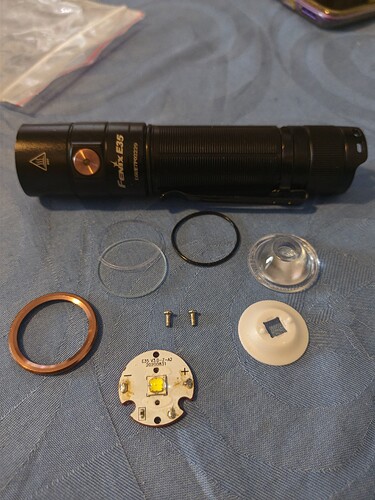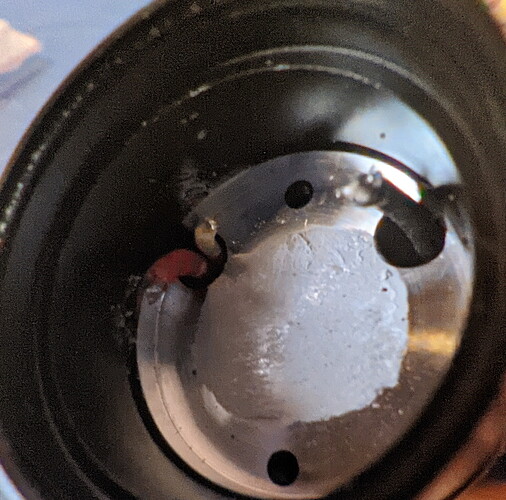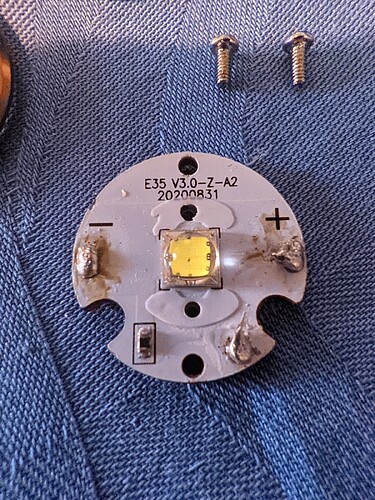Recently, I got asked by a colleague from work to try and fix his ( almost brand new ) Fenix E35. He bought it on his trip to Germany, used it very little, mostly as a “drawer ornament”… after a while, he tried using it for some car work and it did not light up. Battery was charged and tested.
He gave it to me to tinker a bit and try to make it work. If it works, I can keep it.
EDIT: Yup, brand new, used only a few times, he lost the receipt when packing up for the return trip, and can not call up on warranty…
After carefully opening it from the front by removing the bronze ring, glass, rubber glass o-ring, diffuser and a conical white plastic stencil, emitter could be seen, an SST70 on a copper plate, cathode, anode, and what puzzles me… a 3rd white wire connected over a ( around ) 9.4 ohm resistor to the anode
After desoldering the wires and playing with a multimeter a bit, I found out that everything has a good connection, and the resistor is good. Testing with a diode mode on the multimeter, emitter gives no signs of life. I guess that’s 6V for ya’. Also tried directly connecting the emitter to a somewhat discharged 18650, no light whatsoever.
After that, I used the multimeter to test out if there was any power going to the emitter itself.
Fully charged battery, multimeter clips connected to plus and minus in the flashlight head, button press, green light in the switch turns on, aaaaand… nothing. No voltage on plus/minus. Tried that white wire and minus. I get around 2.4V to 2.8V, if I remember correctly. I guess that must be the Eco mode or something…
Any of you fine people have ideas as to what would be the best course of action?



